Introduction
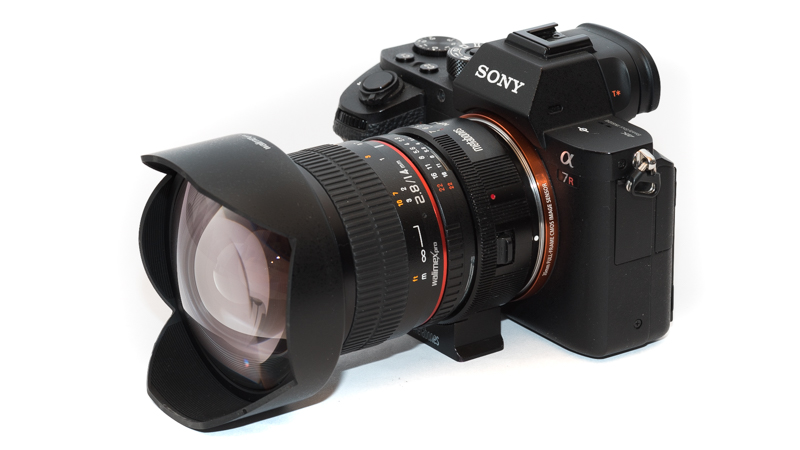
Despite the release of the native E-mount 14mm 2.8 AF lens by Samyang their older – all manual – 14mm 2.8 still has a significant fan base. It is one of the very few lowcost ultra wide angle options and well suited for astrophotography. But it is also a lens known for its ridiculously high distortion and questionable build quality, so let us find out what the whole package has to offer!
Most sample shots have been taken on Nikon DSLRs as in the last years I have pretty much exclusively used this lens for astrophotography on my A7 series cameras.
Sample Images
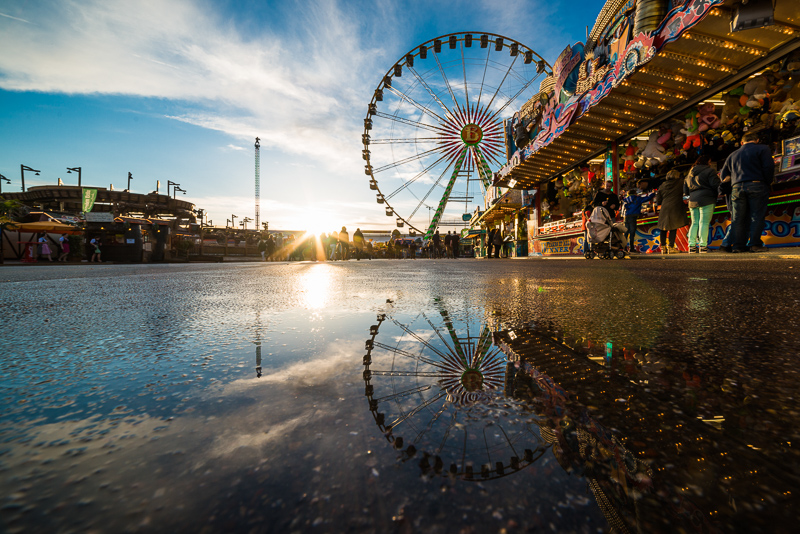
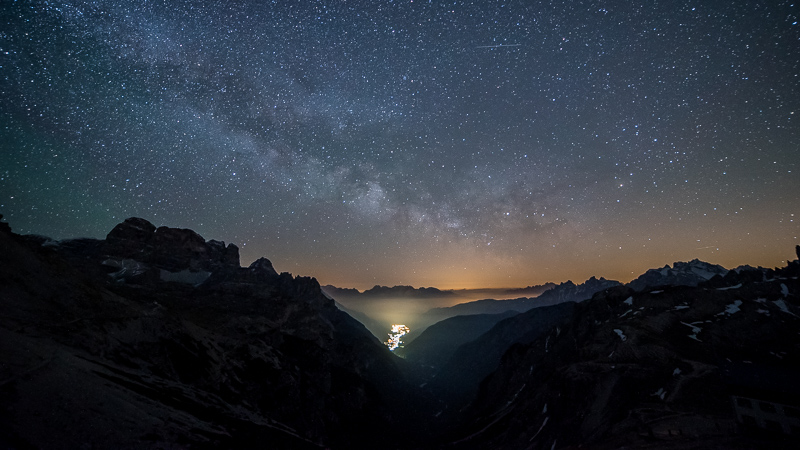
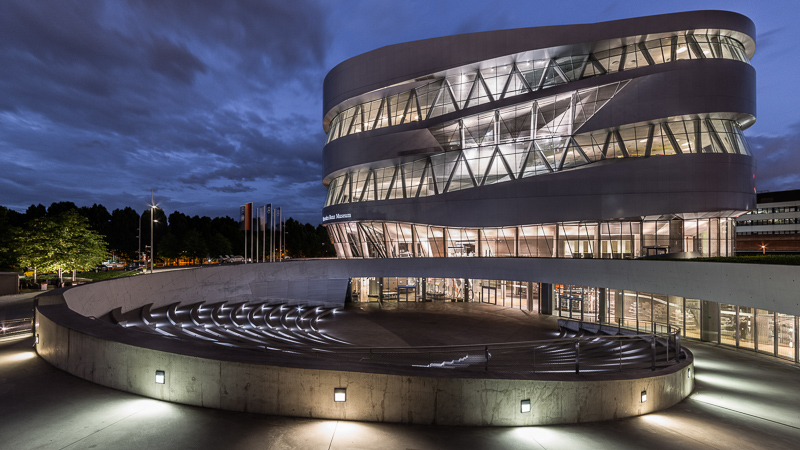
You can find most of the shots in this review in full resolution here.
Specifications / Version History
There is a quite new FE 14mm 2.8 AF lens by Samyang, but I am reviewing the older DSLR version here, which comes in various mounts (e.g. Nikon-F, Canon EF, Sony-A, Sony-E, Pentax) and was released under various different brandings (Rokinon, Bower, Falcon, Walimex). I am reviewing the Nikon-F version which has the following specifications:
-
- Diameter: 87 mm
- Field of view: 115.7 (diagonally)
- Length: 95 mm + adapter (from mount)
- Weight: 535 g + adapter
- Filter Diameter: –
- Number of Aperture Blades: 6
- Elements/Groups: 14/10
- Close Focusing Distance: ~0.28 m
- Maximum Magnification: ~1:15.1
- Mount: Nikon-F
You can get the E-mount version used for 200$/350€ on ebay.com(affiliate link) or new for 280$/410€ on Amazon.com
/Amazon.de
(affiliate links).
Handling / Build Quality
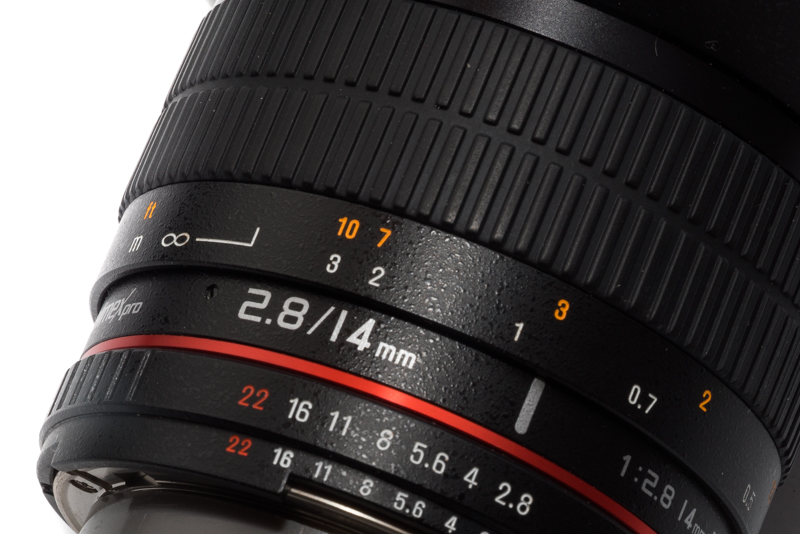
The outer casing is entirely made of plastic while the inside seems to be partly made from metal. The broad rubberized focusing ring travels ~250° from 0.28 m to infinity and feels quite ok. The small aperture ring is very similar to the ones you find on manual focus Nikon lenses and features half stop click stops between f/2.8 and f/11 and full stop click stops between f/11 and f/22, which is absolutely alright.
My confidence in the construction of this lens is not very high (also see “Sample Variation” section below): the non removable hood is a bit of the wobbly type and the focusing ring needs some calibration. Luckily nothing moves externally when focusing, but still all in all it was not exactly a joy for me to use this lens.
If you intend on using a Canon EF or Nikon F Samyang lens on your Sony camera be aware you need an adapter with the correct length otherwise the corners will look very bad. A cheap adapter without tuning usually won’t cut it. You can have a look at this article for further reference.
Vignetting
Our usual approach for measuring the vignetting does not work with this lens because of the bulbous front element. The values other reviewers show are also conflicting. So I decided to show you a comparison to the Laowa 15mm 2.0 which I measured to have -2.9 EV vignetting wide open. By comparing these shots the Samyang has -3.6 EV vignetting at f/2.8 focused at infinity by my calculation.
Before: Laowa 15mm 2.0 @ 2.0 on Sony A7rII | After: Samyang 14mm 2.8 @ 2.8 on Sony A7rII
Sharpness
infinity
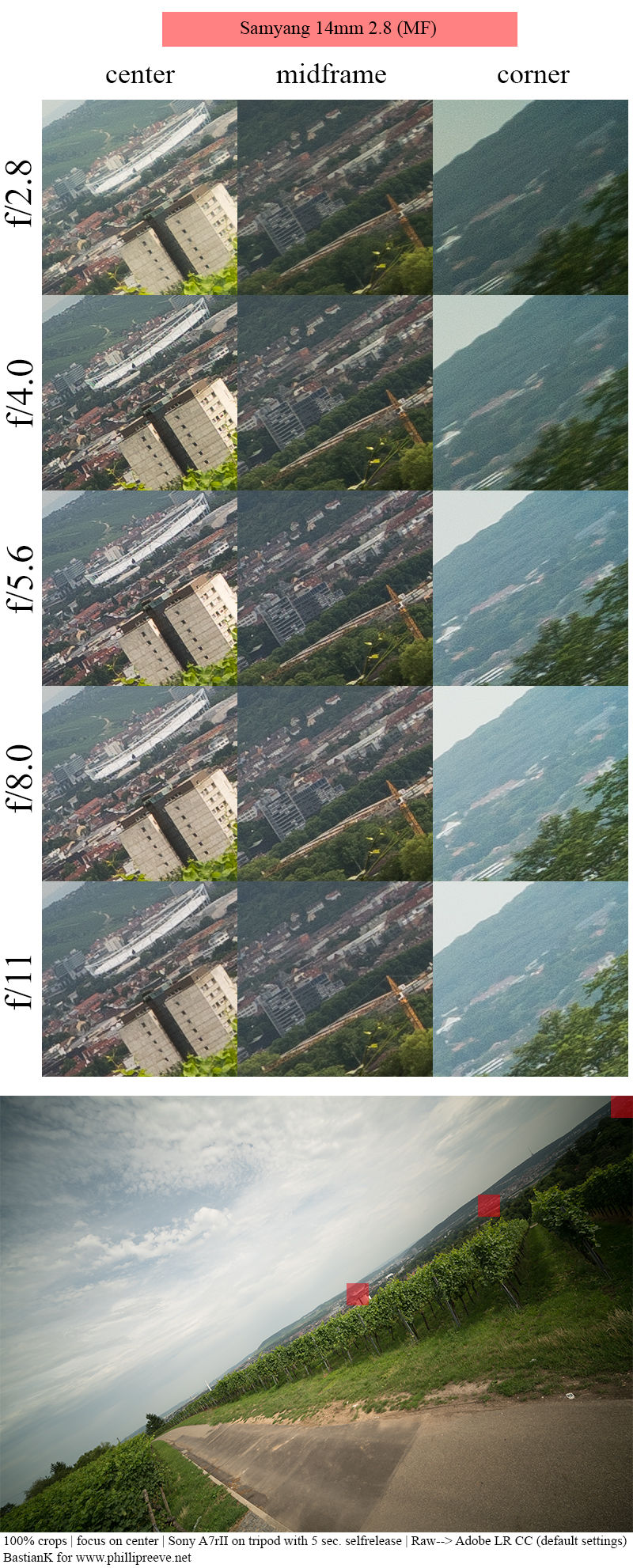
Wide open the lens is a little soft. Stopping down to f/4.0 increases the contrast across the whole frame a lot. Corners look best at f/8.0 to f/11, but keep in mind: the adapter has a huge influence on corner sharpness. I got best results (by far!) with the Rayqual adapter. Corner performance with Metabones and K&F adapter has been significantly worse. The “native” E-mount version might show better performance in the corners.
Flare resistance
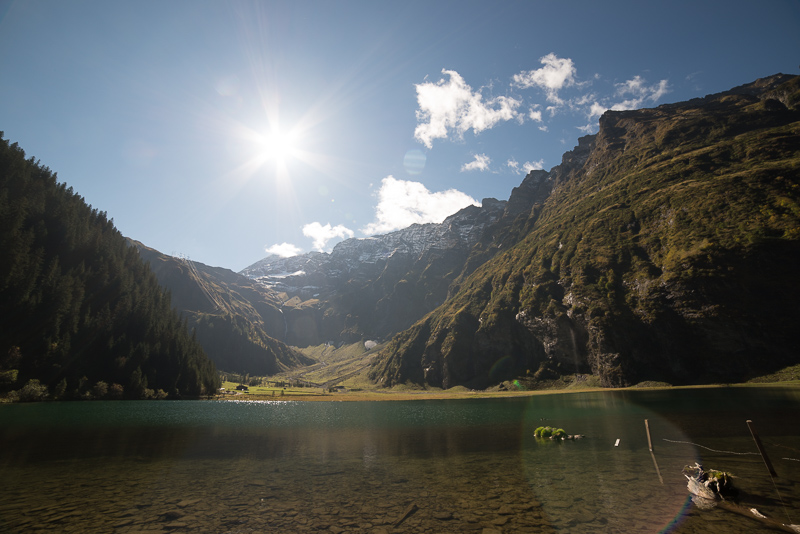
The contrast suffers quite a bit when shooting into the sun, but ghosts are not as bad as I would have expected from the bulbous front element.
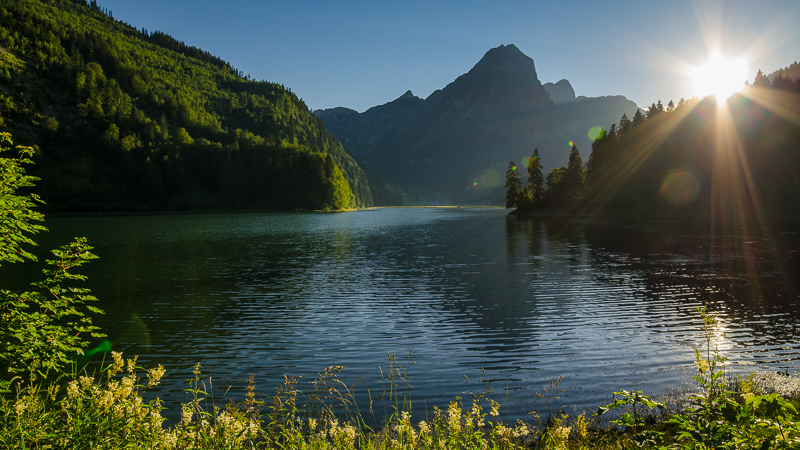
Coma
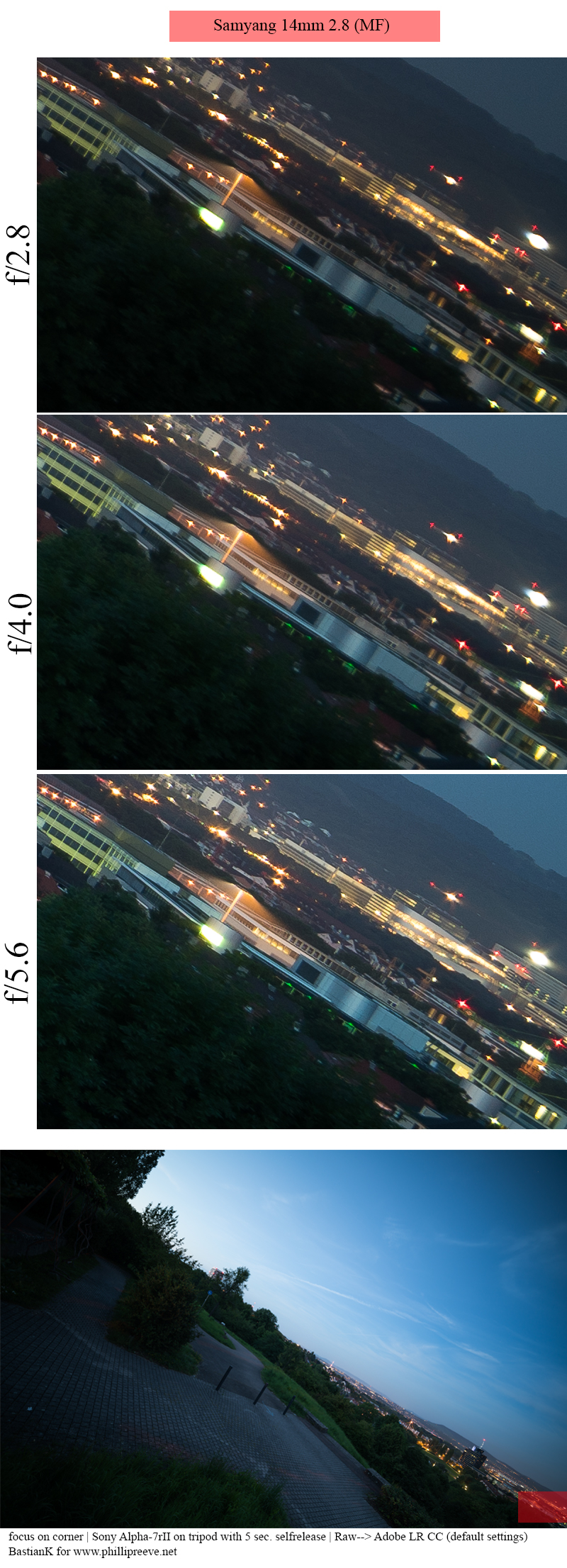
This lens is known for very good coma correction. While you can see slight coma in the city scene there is almost none when shooting actual stars:
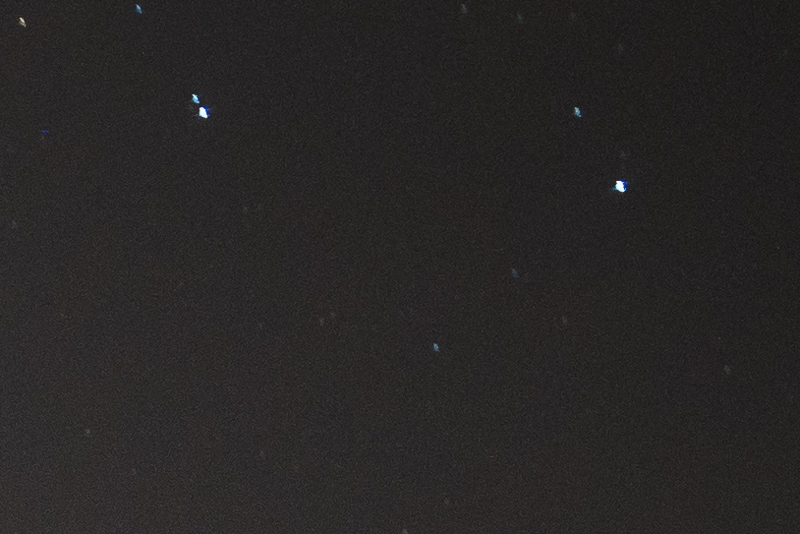
Distortion
Sony A7rII | Samyang 14mm 2.8 | f/8.0 | uncorrected distortion (before) / “corrected” distortion (after)
This lens has some ridiculously high wavy distortion. Many people and reviews will tell you it is easy to correct by using PTLens or one of the many Lightroom profiles. Unfortunately for critical shots this is absolutely not true when you have straight lines running near the borders of the frame. Most corrections do a pretty decent job in the center of the frame, but all I have tested (even the ones I created myself) have problems near the borders and especially in the extreme corners. Take a look at the before/after example: in the center everything looks ok, but the lines near the top look really bad towards the corners.
If this matters for your shooting only you can decide. For astro- and landscape photography this might not be as big a deal as it is for shooting architecture.
Sunstars

The 6 slightly rounded aperture blades will yield sunstars like the ones you can see in the 100% crop above, or in the “Flare” section. This is certainly not my preferred rendering style, but nevertheless the rays have the same length, which I think is quite favourable.
Chromatic aberrations
lateral
Sony A7rII | Samyang 14mm 2.8 | f/4.0 | CA 100% crop before/after border
The lateral CA correction is quite good for a lens this wide. You can spot a small amount of CA, but this is easy to correct in post.
Sample Variation
Normally I don’t talk about this in my reviews as with every manufacturer it is possible to run into a bad copy of a lens. With the Samyang 14mm 2.8 this is a different story though: very often the focusing ring isn’t properly calibrated, so infinity can be at 1m on the distance scale. This alone wouldn’t bother me too much considering the low price, there are even instructions to be found on the internet how to properly calibrate the focusing ring.
What does bother me is the high level of decentering many lenses show. I myself had already 6 samples in front of my camera of which 4 (out of these 3 new from dealer) were so badly decentered, I can only describe them as unusable. And I am unfortunately not alone with such experiences.
I don’t say there are no good copies, there are, but if you are interested in this lens, I recommend only buying from shops with customer friendly return policies.
Alternatives
Laowa 12mm 2.8 Zero-D:
If I was still shooting Nikon DSLRs I would have replaced my Samyang with this lens. Coma correction is slighly worse but that’s pretty much it, anything else looks better (except for the price).
Laowa 15mm 2.0 Zero-D FE:
This is a new contender in the fast wide angle business and it makes clever use of the short flange focal distance. Despite being a stop faster it is therefore smaller, lighter and takes standard 72mm filters. Coma looks slightly worse on the Laowa, pretty much anything else looks better (except for the price).
Sigma 14mm 1.8 HSM Art:
I did not yet get the chance to test this lens personally. From what I have seen so far it is probably better in most aspects, but I am not so sure about coma (so many factors play an important role here, only a side by side comparison can give viable information on what lens is better) and flare resistance yet.
Samyang 14mm 2.8 AF:
This is a real native E-mount lens with completely different optics, electronic contacts and even AF. I haven’t tried this one personally as I prefer manual lenses when it comes to ultra wide angles. From what I have seen this lens also seems to be optically worse. But it might not share the sample variation issues.
Samyang 14mm 2.4 Premium:
I did not yet have the chance to try this one, it might be the better lens.
Irix 15mm 2.4:
At first I was very much intrigued by this lens, but it turned out to be so big, and flare resistance looks so bad, that I lost interest. Neverthless: prices have gone down significantly lately and the “Firefly” version is only slightly more expensive than the Samyang reviewed here, so it might be worth a look in case you are on a tight budget.
Conclusion
good
|
average
|
not good
|
This time I didn’t include sharpness in the table as the performance depends more on sample variation and what adapter you are using than anything else. On my 36mp Nikon D800 one of the lenses I tried had quite decent corner resolution already at f/2.8. Maybe a good copy with “native” E-mount or a decent copy for another mount with a shimmed adapter will perform equally.
When this lens hit the market (around 2009) it became famous quickly because it was for many the first (fast) ultrawide angle lens they could afford. Compared to many older designs sharpness was on a very high level, a good sample could even surpass many times more expensive lenses like the Nikon AF-S 14-24mmm 2.8G.
Unfortunately where there is light there is also shadow. Distortion is not only very high but also very wavy and difficult to correct. Vignetting is – despite the bulbous front element – also higher than that of most of the competition.
But the biggest flaw is the sample variation coupled with the somewhat questionable build quality. Finding a decent one isn’t easy and what makes this even worse: I know some people (who actually used their lens frequently) and the optical quality deteriorated over time.
As of today I have a hard time recommending this lens to anyone, as we have some alternatives now that weren’t available a few years ago. It might still have its place as a low cost lens for single shot or 360° panoramic astrophotography, but for pretty much anything else I think it has been surpassed by the competition.
You can get the E-mount version used for 200$/350€ on ebay.com(affiliate link) or new for 280$/410€ on Amazon.com
/Amazon.de
(affiliate links).
Sample Images
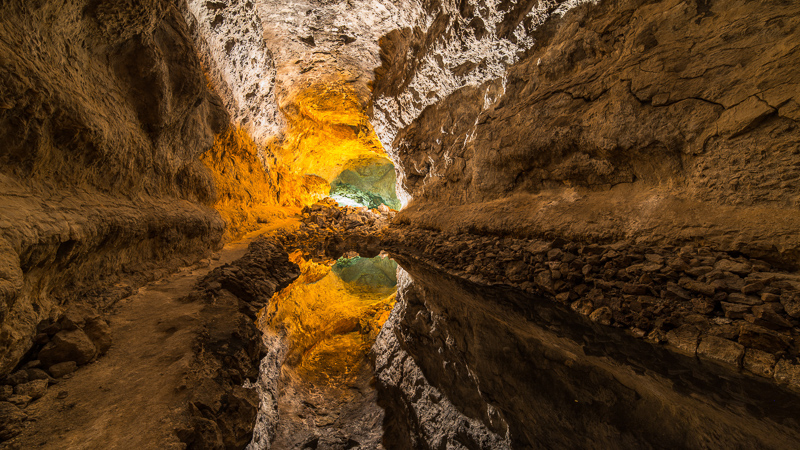
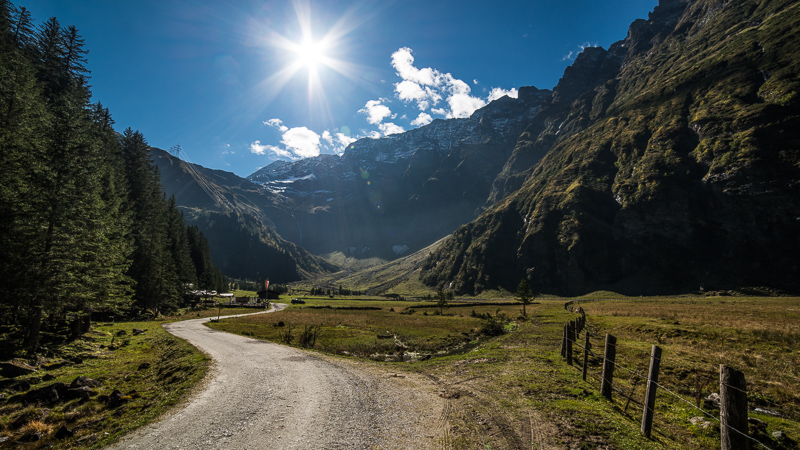
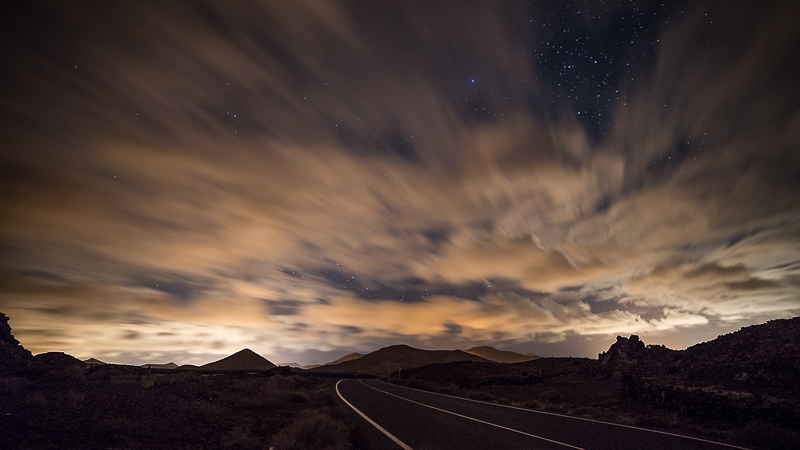
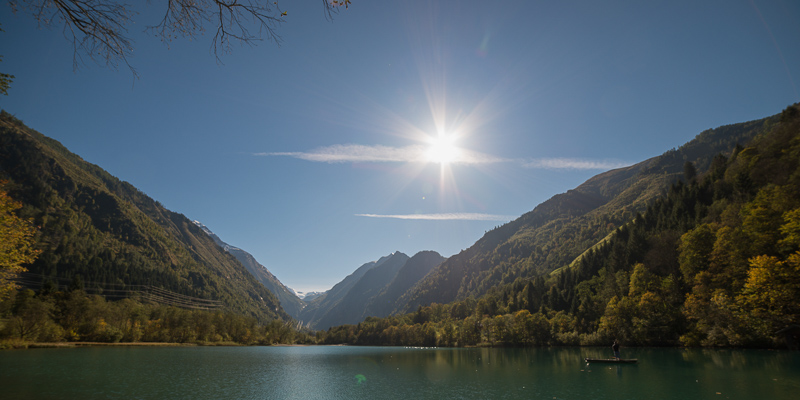
You can find most of the shots in this review in full resolution here.
Further Reading
- Our lens reviews
- Voigtlander 10mm 5.6 Hyper Wide Heliar Review
- Adapters for Manual Lenses on the Sony a7 series: The Guide
- User guide to Ultra Wideangle lenses for the Sony Alpha 7 series
Support Us
Did you find this article useful or just liked reading it? Treat us to a coffee!
![]()
![]()
![]() via Paypal
via Paypal
Latest posts by BastianK (see all)
- Lens & Accessory Spring Sale - April 11, 2024
- Analogue Adventures – Part 30: Kodak Portra 800 C-41 - April 11, 2024
- Review: Nikon Nikkor 55mm 1.2 Ai – The first f/1.2 F-mount lens - April 6, 2024

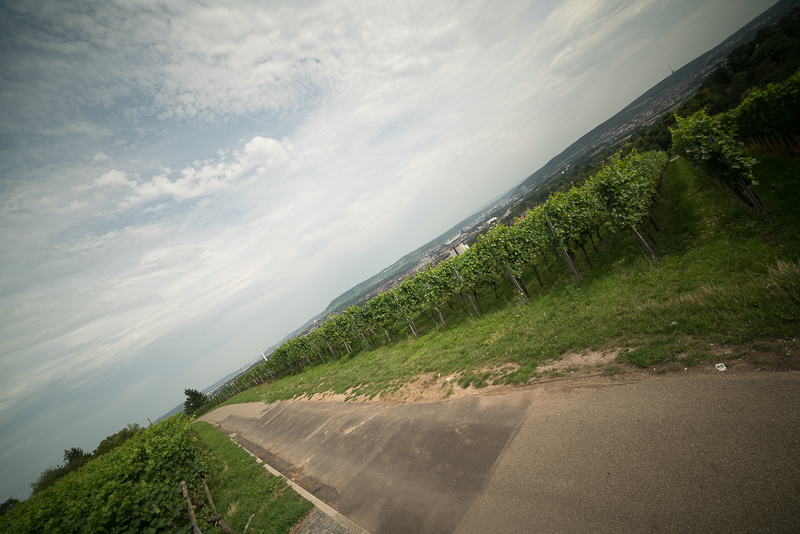


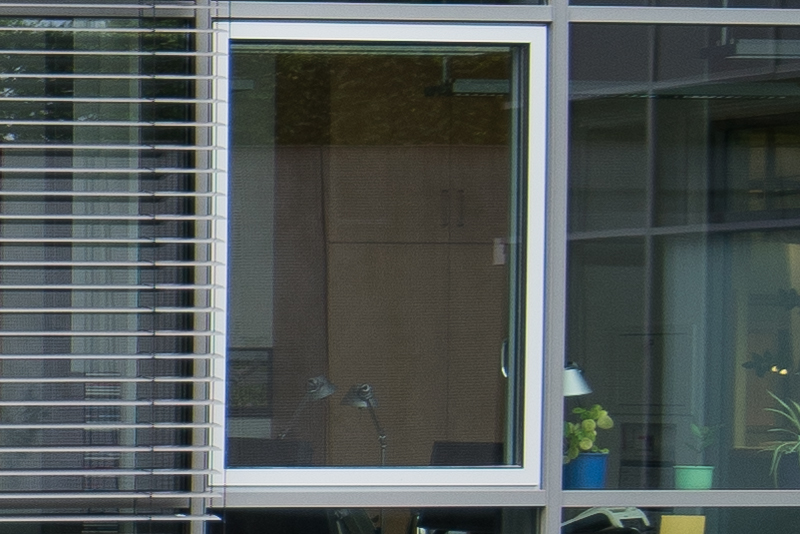

Hello Bastian,
I recently tested 5 diffrent Samyang 14, two E-Mount and three Nikon F Mount on my A7R2. And I compare them to two IRIX 15mm Blackstone and one Firefly-Version.
All of the Irix are prone to curvature of field.
It looks like a “Donat of sharpness” in the Picture.
The clear winner for me is Samyang with F Mount.
The E-Mount Versions were not as sharp at the edges. I tested the F-Mount Versions and found one of them to be the sharpes lense, even at the edges.
So I ask myself, where is the difference between the E-Mount Versions and the F-Mount Versions ?
I own five F-Mount to E-Mount Adaper.
I messure this Adapter and figure out that they are all different in the Flange Distance.
I ask Google and found that the Flange Distance should be 46,5mm for the Nikon F. The Flange Distance of Sony Emount is 18mm, so the Adapter should be 28,5mm. My Adapters vary from 28,3mm to 28,76mm.
I do some Tests and figure out that just a diffrence from 28,3 to 28,45 makes a huge diffrence to get a Picture sharpe from Edge to Center to Edge.
I prepare my Adapter with some shime made of simple paper, calibrate the lense again to minimum focus of 28cm, which is then not exact focused to Infinity at the Infinity mark but I dont care about of cause it is sharpe as hell
now from edge to edge.
I seems that the Edge to Edge Sharpness of this construction depents extreme on the Flange Distance.
My recomidation to Sony-Users: Do not buy the Emount Version. Buy a Nikon-F Mount Version and adapt them.
Spend some time with calibration of the focus and maybe some tests with simple paper shims under the flange of the adapter
and you maybe get a very sharp lense from edge to edge….
Thanks for your insight, that makes perfect sense and is very relevant information.
Hello Franz,
your story is intriging. Version in the native mount performed worse! Sample variation of this lens is just huge, and more sample may be required to have a clear picture!
There are even reports that some sample of this lens do not manage to focus at the infinite while brand new! But this sometimes seems to be fixable by simply ajusting the lens:
https://www.youtube.com/watch?v=gtt9bcJDU2U
Anyway, the fact that you improved corners by calibrating flange distance based on the minimum focus distance is very interesting!
Funny enough,
I found another guy with similar findings on Fred Miranda, but with the latest version i.e. the Samyang XP 14 2.4:
http://www.fredmiranda.com/forum/topic/1479449/0#13954023
(He shimed his metabones later in the post and obtained good results in the corners as well!)
Yes in deed none of the lenses I tested are calibrated to infinity, but it is quite easy to do. The frontside Ring is responsible to manage the stop between the minimum distance 28cm and the few degrees turning after the Infinity mark. The rest ist done with removing a pice of duct tape, turning the focus measuring ring to the right position and fix it again with the duct tape.
I love this lense of cause it is so sharp…see the picture I take last week.
Hi,
First of all, apologies for my poor english.
Did you test the Samyang 1.8/20? I’m very interested in know more about it.
In some reviews i’d read that it is good enough for his price, but in anothers not.
Thanks
I did not and my personal interest is limited considering the Laowa 15mm 2.0 and Tokina Firin 20mm 2.0.
What do you think about new Irix 11mm f/4? I find out that is very good in the corners and it has the widest field of view.
The Voigtlander 10mm 5.6 is the widest lens and only a fraction of the size. This is why I am not really interested in the Irix 4/11 (coupled with the disastrous performance against bright light seen with the Irix 2.4/15).
Hi Bastian,
I’ve just tried the E mount version of the Samyang 2.8/14 ED AS IF UMC (manual focus, no electrical contacts/exif) It has a formula of 14:12, so not the same as the one tested. Supposedly better, as a later model?
It’s not sharp on right, (so it’s going back), but what struck me was how terribly difficult it is to nail focus in centre at F2.8 on A7RII magnified. “Vague” is not the word! I could move the focus ring within nearly a 1cm arc and see no change in focus (centre). I wonder if that is normal, or just this bad copy? I couldn’t imagine trying to get this critically sharp for astrophotography!
There is only one manual focus 14mm 2.8 lens by Samyang and it is the one reviewed here.
Not sure where you get the 14/12 information from, Samyang states 14/10.
In terms of focus ring all I tried are like that.
You can turn it a lot and see no difference…
I put some tape to remember where to set it for astrophotography, but won’t help with a decentered sample of course.
After the Laowa 15mm 2.0 was available I sold the Samyang and never looked back.
Hi Bastian,
(Mine is the e mount version by the way, not needing an adapter)
I’ve now looked at several review/sales sites, and they’re about equally split as to whether it’s 14:10 or 14:12.
One site even said 14:12 in the article, but 14:10 in the spec.
However, the official Samyang site does say 14:10, so that settles it: https://www.samyanglensglobal.com/en/product/product-view.php?seq=194
Or does it? Just to cloud the issue, Samyang’s press release originally said 14:12!
“Manufacturer description: This super wide-angle lens has been designed to work with Full-Frame and APS-C cameras. Its optical construction features 14 elements and 12 optical groups. The lens comes with two ED lenses and two aspherical elements (hybrid and standard). All lenses have been covered with the highest-quality antireflective layers of new generation: UMC – Ultra Multi Coated. This optical construction as well as state-of-the art materials will allow you to take photos of the highest possible quality. Opinions and tests carried out by respected professional magazines and photography portals confirm the lens’ unique quality.”
Also two sets of diagrams around the web!
14:10
https://camberwellcameraclub.org.au/samyang-14mm-f2-8-ultrawide-lens-for-full-frame-at-350/
…and 14:12
https://www.dpreview.com/articles/8011470433/samyung14mm
Hi Bastian, At first I looked around and found that both 14:10 and 14:12 are cited about equally by review and sale sites. However on the Samyang official site it does say 14:10 with a diagram. …but Samyang official press release says 14:12 (at least on dpreview)!
I’ve even found a diagram for the 14:12 design, also on dpreview!
(I tried to link to sites but it wan’t published!)
Thanks for the link to the Laowa 15mm 2.0. I’ll go for that instead ;o)
(By the way, my 14/2.8 Samyang was in a fixed E mount version, so no adapter needed.)
That “native” E-mount version is the same as the DSLR version with just a built in tube as long as an adapter.
No optics inside.
Hi Bastian, I´m thinking about buying the Samyang 14mm f/2.8 AS Manual Focus for Sony E-Mount A7 series and I was wondering if you have any tips that could help me identify a bad copy? I will be using this lens for Real Estate so would you recomend the Samyang over the Voigtlander 5.6/12 M39? The Voigtlander can be found used with the M39 mount but I can get an adapter. Thank you for your time.
A good Samyang can show better corner resolution than the Voigtlanders with a little less vignetting stopped down.
Whether it makes sense to hunt for a decent copy, that is another question.
Best have a look at our guide how to check a lens for decentering.
Thank you so much for your reply.
Hi Bastian, for Real Estate would you recommend the Samyang 14mm f/2.8 AS E mount over the Voigtlander 15mm f/4.5 super wide heliar for Leica M mount? As I can find an adapter for E mount. Thank you for your time!
The successor of this lens will be shipped on 15th of June.
Is it planned to review this as well?
Unfortunately, it looks as if no filters can be screwed on either.
I doubt any of us will buy it and we don’t have access to review samples from Samyang, so better not hold your breath.
Hello Bastian,
did the Focus peaking function correct in combination with the Samyang 14mm F2.8 MF ?
I own the Sony a7M2 and have a lot MF lensen, but couldn’t use them without the focus peaking option.
Kindly Regards,
Roelof
Focus peaking is not suitable for ultra wide angle lenses, better use magnify.